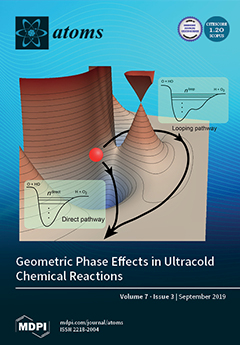Open AccessEditor’s ChoiceArticle
Emission of Fast Hydrogen Atoms in a Low Density Gas Discharge—The Most “Natural” Mirror Laboratory
by
Oleksandr Marchuk, Sven Dickheuer, Stephan Ertmer, Yuri Krasikov, Philippe Mertens, Christian Brandt, Sebastijan Brezinsek, Andrei Goriaev, Mykola Ialovega, Beatrix Göths, Arkadi Kreter and Christian Linsmeier
Cited by 2 | Viewed by 4737
Abstract
In this work, we present a new application for the line shapes of emission induced by reflected hydrogen atoms. Optical properties of the solids in contact with the plasma could be effectively measured at the wavelength of Balmer lines: time-resolved measurements of reflectance
[...] Read more.
In this work, we present a new application for the line shapes of emission induced by reflected hydrogen atoms. Optical properties of the solids in contact with the plasma could be effectively measured at the wavelength of Balmer lines: time-resolved measurements of reflectance and polarization properties of mirrors are performed using the wavelength separation of the direct and reflected signals. One uses the Doppler effect of emission of atoms excited by collisions with noble gases, primarily with Ar or with Kr. In spite of a new application of line shapes, the question of the source of the strong signal in the case of Ar exists: the emission observed in the case of the excitation of H or D atoms by Ar exceeds the signal induced by collisions with Kr atoms by a factor of five, and the only available experimental data for the ground state excitation show practically equal cross-sections for both gases in the energy range of 80–200 eV.
Full article
►▼
Show Figures





